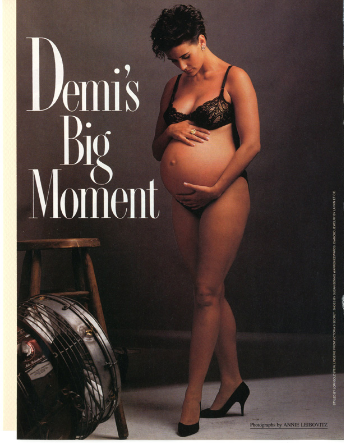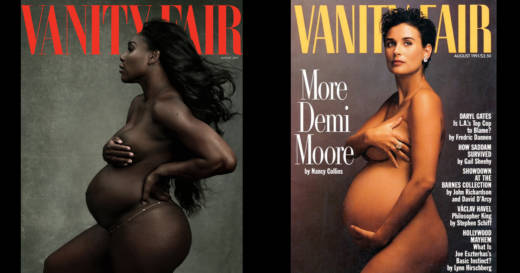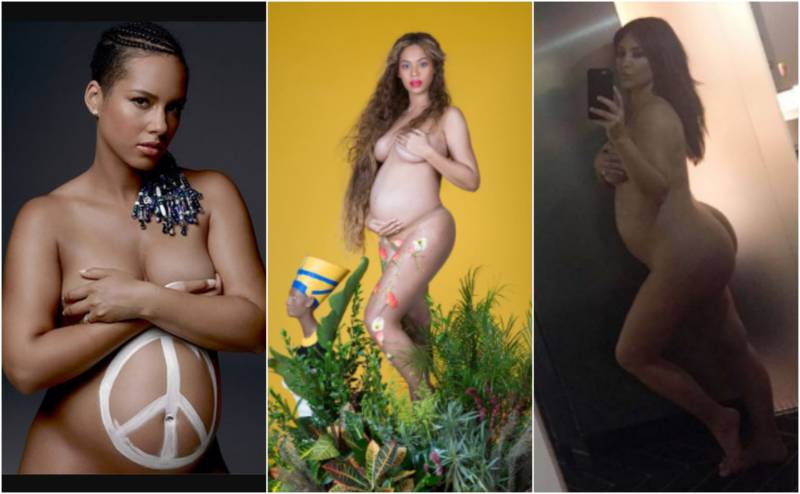This week, Serena Williams graced the cover of Vanity Fair’s August issue, windswept, nearly nude, and in the late stages of pregnancy. The image is the epitome of beauty, made all the more powerful in its simple rendering of Williams’ strength and grace.
The cover arrives exactly 26 years after Demi Moore and Annie Leibovitz unapologetically tore up the rule book about pregnancy and sexuality, by having Demi pose in the nude while heavily pregnant. The image — probably the most famous in all of Vanity Fair’s history — caused shock, awe, and not a little disgust when it was first released.
The August 1991 cover was a watercooler moment years before anyone even had a name for that. It was pored over, analyzed, dissected. Vanity Fair’s editor Tina Brown may have described it as “a new young movie star willing to say, ‘I look beautiful pregnant,’ and not ashamed of it,” but reactions across the country were visceral. Many people were simply unable to comprehend how this intersection of pregnancy and sexiness could be out there for the whole world to see. Some stores refused to stock the magazine; others hid Demi’s luminous form in the sorts of packaging usually reserved for pornography.

The controversy was widespread. An article for the Bangor Daily News (July 17, 1991) acts as a time capsule. In it, a 24-year-old woman asks, without a wisp of irony: “How are her kids going to feel about this when they get old enough to understand?” Another exclaims: “It’s disgusting. Women are most beautiful when they’re pregnant, but from the face up!” Another declares: “I think it’s in poor taste”.
Probably the most telling quote in the article though, comes from a well-meaning grandfather, who opines: “I think it’s very nice. Really very nice. This is nature at work. I get sick and tired of seeing sexy women on magazine covers. This is real.” For this particular grandpa, the image was rendered totally innocuous and asexual by the mere fact of Demi’s pregnancy. The only reason this man wasn’t offended by the image was because he entirely missed its point.




